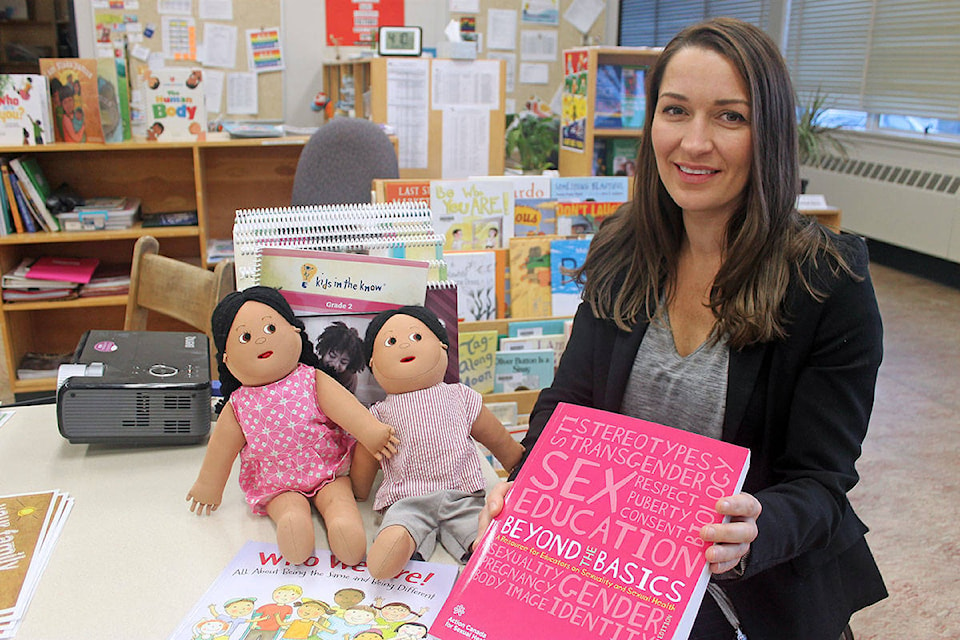If talking to a teenager about sex seems tough, try talking to a classroom of them.
That’s where Natalie Chelsom comes in.
Chelsom, Nanaimo school district’s new personal and sexual health educator, is not only talking to kids about their bodies and healthy relationships, but coaching teachers on research, resources and “ever-evolving” language around sexual health to help them deliver lessons.
The topic is part of the B.C. curriculum – which requires students to learn everything from body parts, to inappropriate and appropriate touching and healthy sexual decision making – but when Chelsom was hired last year, not every school was offering the same level of education.
The school district has given her the job of building capacity, consistency and equity so every student, in every grade and in every school gets the same sexual health lessons the curriculum requires.
At the district’s education committee meeting in early November, Chelsom presented a vision to advance the mission on sexual health, such as a hybrid model where teachers handle baseline instruction supplemented by training and the occasional experts, consistent resources, inclusion and accountability.
A new, inclusive teaching manual will soon be introduced to schools, covering language representative of all relationships, orientations and bodies instead of older resources that focus, for example, on male-female relationships. It’s in addition to a personal safety program, called Kids in the Know, the district has invested in.
Chelsom is also looking at a culturally sensitive program to teach sexual health to new Canadians and is set to launch a new website that will not only be a resource for teachers and students, but will allow parents to see what their kids are learning.
“We know that some students are graduating without getting the lessons that they ought to receive, so we need to think about what the accountability is and how can we make sure every student is getting what its mandated,” said Chelsom to trustees last month. “When we don’t do the job that is expected of us we see a ripple effect into our community health as well as the health of our partners, the health system, people’s relationships.”
Chelsom has been a teacher in the district, and between 2008-2010 delivered sexual health to local schools as an educator for Options for Sexual Health.
A challenge, she said, was schools had a hard time coming up with the fees to pay for the service and often left it to the parent advisory councils – but PACs have shifted away from paying, leaving teachers responsible to deliver the instruction.
Chelsom said teachers were always making sure sexual health was getting delivered but there wasn’t an equitable environment, with some schools having very high quality sexual health education if the teacher had specific training or was able to hire an outside provider, while other schools didn’t have the money to pay for someone and didn’t have teachers who necessarily knew how to present the information.
She’s also seen barriers such as teachers not feeling prepared because they are untrained.
“We want to make sure that it doesn’t depend on what area of town a kid comes from, or the teacher they have, but that all schools are following a larger guiding principle so we can ensure all of our students are feeling safe and valued and are getting the skills and information they need to make healthy, safe decisions,” said Chelsom.
“I think that we’re still in the very first stages of a greater plan, so we’ve done the scanning, we’ve seen what the strengths are, we’ve seen the areas we can improve on, and I think we’re just about ready, maybe next year, to take some steps forward.”
Assistant superintendent Bob Esliger said the district wants to ensure it’s providing a standard delivery of sexual health education and an advantage of a sexual health educator is that she can meet with teachers, prepare guidelines, provide expertise and ensure an understanding of the scope of the curriculum.
“So it’s all coming from within the district,” said Esliger.
